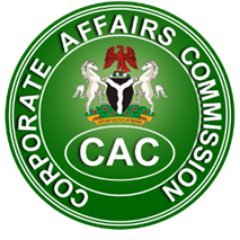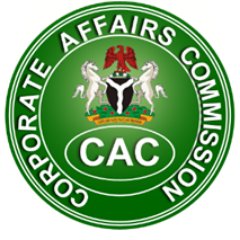How to Wind Up A Company in Nigeria
What is Winding Up?How to Wind up a company in Nigeria and its procedures in Nigeria, the process of birth(incorporation) and the processes involved in bringing an end of the corporate existence of a company called Winding up has its peculiar procedures.
What is winding up in corporate matters? Upon registration of a company the company becomes a juristic person ,meaning it acquires status of a person in law, enjoying the status of owing of assets from creditors.
Winding up is the processes involved in bringing the corporate life of a company to an end voluntarily or by compulsion,while dissolution of a company is the end of the company. before we proceed further ,note that there are differences between winding up,dissolution of a company,and liquidation of a company. dissolution of a company is when a company ceases to exist under the law,while liquidation of a company means converting the assets of the company to cash.
In Nigeria corporate practice, companies can be wound up in different ways :voluntarily and by order of the court and subject to the supervision by the court. in Nigeria federal high court has jurisdiction to wind up a company.
CIRCUMSTANCES UNDER THE OLD DISPENSATION A COMPANY CAN BE WOUND UP
under the old dispensation a company in debts,and after three weeks of receiving a letter of demand,such a company can be wound up by a petition written to that effect,also the company directors can pass s special resolution for the winding up of a company,also a company can be wound up where the company is in default of complying with its statutory meetings/statutory report the commission can wind up such a company.
in CAMA 2020, the laws are more intervening to the winding up of a company. the winding up of a company under the new dispensation takes more salvaging steps,which gives Opportunity for the appointment of an Administrator to oversea the winding up of a company.instead of just winding up a company based on petition that it has become insolvent and cannot pay its debt too creditors, there are other steps which can be explored to still give life to the company,or a second chance to stay afloat or to land safely.
Then another intervening procedures under the new dispensation is the Company Voluntarily Arrangement for settlement of the unsecured creditors of the company.
what is the objective of Company voluntarily arrangement,it is a proposal made by the company to its unsecured creditors, an unsecured creditor is a creditor that lends money to a company without specified assets as collateral. the proposal will be submitted to the court before the nominees ,creditors,members of the company can schedule meeting for proposal to be rubber stamped.if the decision reached at the cva meeting is satisfactory to the creditors and members they can approach the court for order making it binding. however where there is an aggrieved member in this cva options he can approach the court to ventilate its annoyance.
What you are likely to see in a (CVA)Company Voluntary Arrangement Winding up.
Appointment of a chairman of the creditors or members of the company.
A scheduling and holding of creditors meeting and Meeting arrangement
A report sent to the court for adoption of Company Voluntary Arrangement Resolution.
Scheduling and Holding of members meetings
A resolution at members meeting
Report of the resolution at the members meeting to the court.
Report of the resolution reached at the creditors meeting to the court.
it is important to note that any dissatisfied member or creditor can approach the court for redress on the resolutions of the meetings.
AN ADMINISTRATOR BROKERED WINDING UP
Unlike the CVA Company voluntary winding up,another way a winding under the new dispensation is by an appointment of an administrator. remember we said initially that the extant CAMA is more intervening than the old CAMA in dealing with winding up/insolvency proceedings to a company.
What are the objectives of administration and features seen in company that enters into administration? well administrator is more interested in the following:
- An administrator sets out to first to see chances of rescuing the company as a going concern.
An administrator set outs plans to achieve a better result for the creditors better than in an occasion the company is wound up. he tries to throw in the magic wand to save the company from being wound up
An administrator sets out plans on how to realise the assets of the company for the secured creditors of the company if the company cannot be saved from wind up
An administrator makes out plans on how to distribute the assets of the company to the preferential creditors of the company if all avenues to rescue the company woes has failed
An administrator is more intervening to see that the company woes does not fall heavily on the creditors.
WHAT YOU ARE LIKELY TO SEE IN ADMINISTRATION PROCEEDING.
An application is made before the court for an appointment of an administrator.
The Application is made mostly on the ground that the company is likely to be insolvent
The Application can also be made to the court that the company needs an administrator for it to be rescued from insolvency.
An Administrator is appointed by the court to oversea the company
The administrator is needed to achieve the purpose of administration ,which is for the company to enjoy the status of being in administration.it is important to note that a company under administration enjoys one year moratorium from any winding up petition likely to be filed against it from creditors.this moratorium allow the administrator to carry out activities undisturbed.
Where the court grants the application for an administrator,the administrator takes over.
The scheduling and holding of meeting by creditors continues.
An Aggrieved creditor can approach the court to ventilate his dissatisfaction on the appointment of an administrator.
An aggrieved creditors can approach the court to ask that winding up be enforced on the company despite the appointment of a creditor,but he must seek the leave of the court.
An administrator must file report of creditors and members meeting to the corporate affairs commission.
An administrator can be removed by an application made to the court by a dissatisfied creditors who is unhappy with his performance.
An administrators tenure can be renewed by an application made to the court to that effect,before the tenure expires, for an additional period of time to be given to the administrator.
An administrator can make an application to terminate his functions if the purpose of administration has been achieved or cannot be achieved.
An administrator can ask the court to terminate the administration if he thinks the company should not have entered into administration in the first place.



